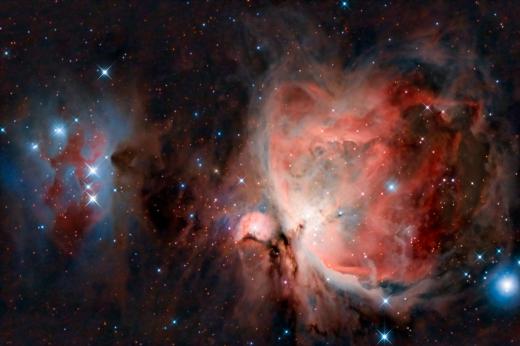What is Rigel?
 Michael Anissimov
Michael Anissimov
Rigel is the brightest star in the constellation Orion, where it makes up Orion's "left foot" (on the right from the perspective of Earth). It is the sixth brightest star in the night sky. Its name derives from the Arabic Riǧl Ǧawza al-Yusra, which means "Left Foot of the Central One." Instead of referring to the constellation as "Orion," the Arabic world called it "the Central One."
The star is a bluish-white supergiant star containing 17 solar masses of material, shining with a luminosity 40,000 times greater than the Sun. Being a supergiant, it is approximately 70 solar radii in diameter, or about a third of the distance from the Sun to Earth. Located between 700 and 900 light years from the Earth (astronomers don't know for sure), Rigel is the brightest star in the part of the Milky Way near Earth. The next brightest star, Deneb, is a full 3,300 light years away. Rigel is closely aligned in the sky with the Orion Nebula, one of the only nebulae visible with the naked eye, although it is really twice the distance away from Earth.

Rigel's brightness is intense enough to light up various dust clouds in its vicinity, such as the famous Witch Head Nebula, located 1,000 light years away. Like many stars in the universe, it is part of a system with more than one star — the one most people know is Rigel A, while Rigel B is used to refer to a pair of main sequence stars that orbit it at a distance of 2200 AU. Because Rigel A is much brighter, it is referred to as the "primary" star whereas the two components of Rigel B are "secondary."
The star is surrounded by a cloud of expelled gas. This is present in many supergiant stars, a side effect of their low density and high core temperatures and solar wind.
AS FEATURED ON:
AS FEATURED ON:












Discuss this Article
Post your comments